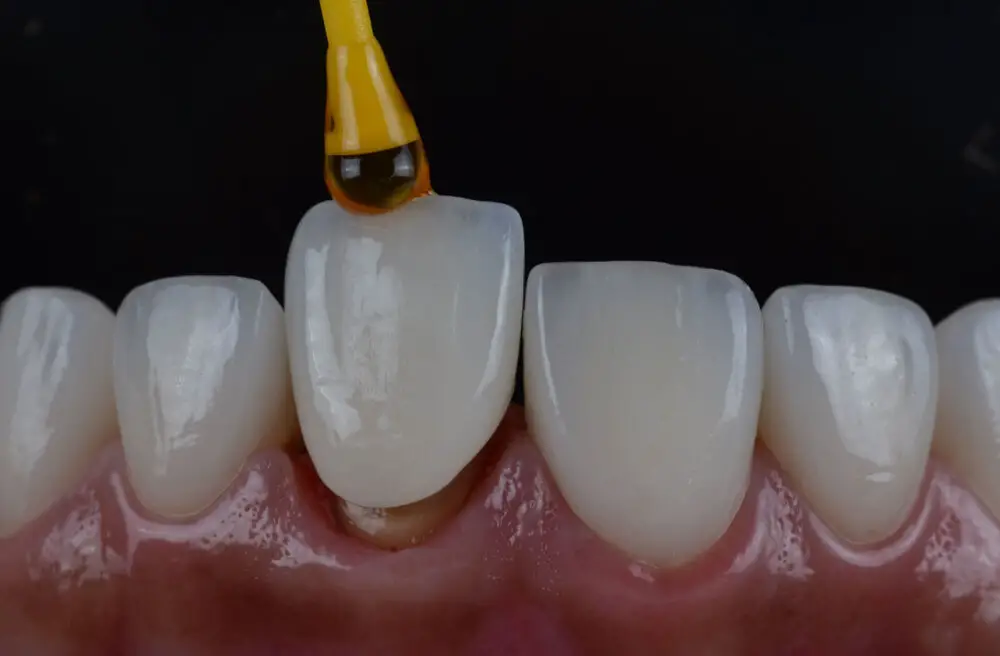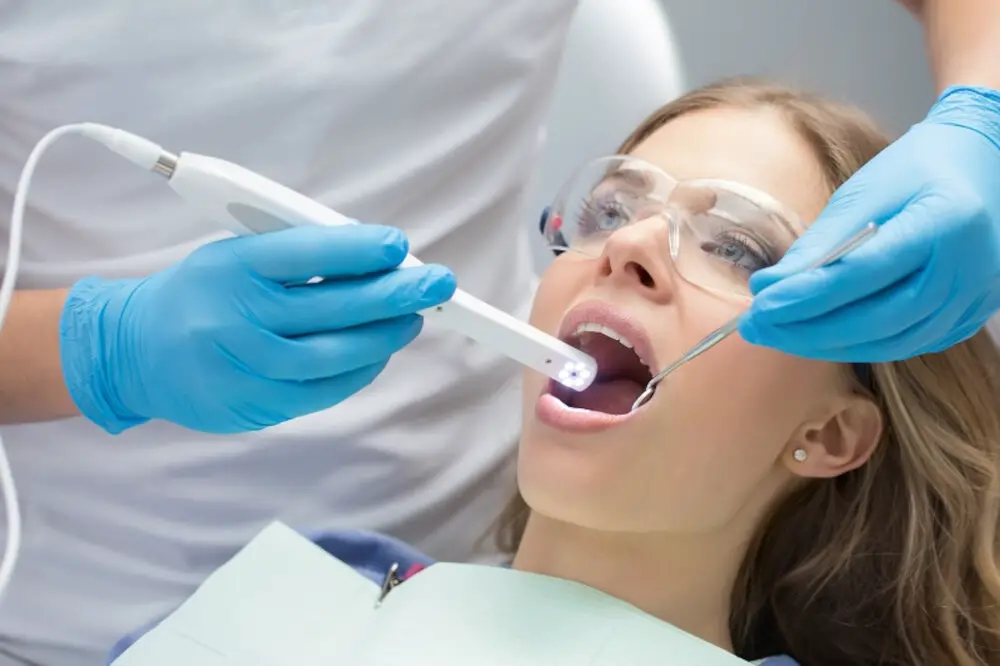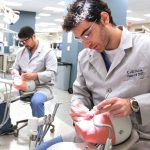Wisdom Teeth Removal: When Can You Safely Use Straws?

Wisdom teeth removal is a common dental procedure that many people undergo during their lifetime. The wisdom teeth, also known as third molars, are located at the back of the mouth and typically emerge in early adulthood. However, these teeth often cause trouble as they can become impacted, infected, or cause overcrowding in the mouth. As a result, many people opt to have their wisdom teeth removed by a dental professional. After wisdom teeth removal, it is essential to follow post-operative instructions to ensure a speedy and comfortable recovery. One of the most common questions that patients have is when they can safely use straws after the procedure. While using a straw may seem harmless, it can potentially dislodge the blood clot that forms over the extraction site, leading to a painful condition called dry socket. Therefore, it is crucial to understand the appropriate time frame for using a straw following wisdom teeth removal.
Wisdom teeth, also known as third molars, typically grow between the ages of 17 and 25. However, they often cause pain, infection, and overcrowding in the mouth. Wisdom teeth extraction is a common procedure that involves removing one or more of these teeth. The process usually involves local anesthesia and may require general anesthesia depending on the complexity of the extraction. Recovery times vary, but most people can return to their normal activities within a week. During recovery, it is important to avoid using straws or smoking because the sucking motion can dislodge the blood clot that forms in the extraction site, leading to dry socket, a painful condition that can prolong the healing process.
Following postsurgery instructions is essential for a successful recovery after any surgical procedure, including wisdom teeth removal. Ignoring or deviating from the instructions provided by the dental surgeon can lead to serious complications, such as infection, excessive bleeding, or delayed healing. It is crucial to adhere to the guidelines, such as avoiding the use of straws or consuming hard or crunchy foods, to promote proper healing and prevent any harm or discomfort to the surgical site. Moreover, patients should also take the prescribed medications, maintain proper oral hygiene, and attend follow-up appointments to ensure a smooth recovery and reduce the risk of any long-term complications.
What are Wisdom Teeth?

Wisdom teeth, also known as third molars, are the last set of teeth to erupt in the back of the mouth, usually appearing in the late teenage years or early twenties. Most adults have four wisdom teeth, one in each quadrant of the mouth. However, some individuals may have fewer or more than four, and some may not develop any at all. The primary purpose of wisdom teeth is to assist in grinding and chewing tough foods, such as meats and fibrous vegetables. However, due to the modern diet and advancements in dental care, wisdom teeth are often unnecessary and can cause more harm than good. In many cases, wisdom teeth can become impacted or cause overcrowding, leading to pain, infection, and damage to surrounding teeth. Additionally, wisdom teeth can be challenging to clean, increasing the risk of gum disease and tooth decay. For these reasons, many dentists recommend having wisdom teeth removed before they cause problems. In some cases, wisdom teeth may be removed before they have fully erupted, reducing the risk of complications and making the procedure less invasive. Overall, while wisdom teeth may have been useful for our ancestors, they are often more trouble than they are worth in modern times.
Wisdom teeth, also known as third molars, are the last set of teeth to develop in the mouth. They usually appear between the ages of 17 and 25, and in some cases, they may not erupt at all. The primary purpose of wisdom teeth is to help with the chewing and grinding of food. However, due to the limited space in the human jaw, wisdom teeth often cause problems such as pain, infection, and crowding of other teeth. As a result, many people opt to have their wisdom teeth removed. Although the removal of wisdom teeth is a common procedure, it is important to take proper precautions to ensure a smooth recovery, such as avoiding the use of straws for several days after the surgery.
Wisdom teeth, also known as third molars, are the last set of teeth to develop in the mouth. They usually emerge between the ages of 17 and 25, but they can cause a lot of problems if they don’t have enough room to grow properly. Some of the common issues with wisdom teeth include impaction, where the tooth is blocked from emerging properly; crowding, where the tooth pushes against other teeth; infection, which can lead to pain and swelling; and decay, which can occur if the tooth is difficult to clean. These issues can often be resolved by removing the wisdom teeth, but it’s important to wait until the appropriate time to use straws after the procedure to avoid complications such as dry socket.
Wisdom Teeth Removal Procedure

Wisdom teeth, also known as third molars, are the last set of teeth to emerge in the back of the mouth. As they often grow incorrectly or become impacted, they can cause significant pain and discomfort in many patients. Wisdom teeth removal is a common dental procedure that is often performed to alleviate these symptoms. The procedure involves the surgical removal of one or more wisdom teeth from the mouth. It is typically done under local anesthesia and can take anywhere from 30 minutes to an hour to complete. In some cases, general anesthesia may be required, particularly if multiple teeth are being removed. The wisdom teeth removal procedure involves the dentist making an incision in the gum tissue to expose the tooth and the surrounding bone. The tooth is then carefully extracted, and any remaining debris or bone fragments are removed from the socket. After the tooth has been removed, the dentist will clean the area thoroughly and suture the gum tissue back together. Patients may experience some discomfort and swelling following the procedure, but these symptoms can be managed with over-the-counter pain relievers and ice packs. It is important for patients to follow all post-operative instructions provided by their dentist to ensure proper healing and minimize the risk of complications.
Wisdom teeth removal is a common dental procedure that involves the extraction of one or more wisdom teeth, which are the last set of molars to emerge in the back of the mouth. The procedure is usually performed by an oral surgeon or a dentist under local anesthesia, sedation, or general anesthesia to minimize any pain or discomfort. During the procedure, the dentist or surgeon will make an incision in the gum tissue and remove the wisdom teeth, which may be impacted, partially erupted, or fully erupted. The recovery period after wisdom teeth removal usually takes a few days to a week, during which patients are advised to avoid using straws, smoking, or drinking alcohol to prevent dry socket, a painful condition that can occur when a blood clot is dislodged from the extraction site.
In dentistry, there are three main types of anesthesia used during wisdom teeth removal: local anesthesia, general anesthesia, and IV sedation. Local anesthesia numbs only the immediate area where the wisdom teeth are being removed, allowing the patient to remain awake and alert during the procedure. General anesthesia, on the other hand, puts the patient into a deep sleep, making them unconscious for the entirety of the surgery. IV sedation is a type of conscious sedation that uses medication administered through an IV to relax the patient and reduce any pain or discomfort. The choice of anesthesia used during wisdom teeth removal will depend on the patient’s medical history, personal preferences, and the complexity of the procedure.
Recovery time after wisdom teeth removal varies depending on each individual’s case. Generally, it takes about one to two weeks for the gums to heal completely, but the full recovery process can take up to a month. During this time, it is essential to follow the dentist’s instructions, including avoiding using straws for the first few days post-surgery. Using straws can create suction in the mouth and dislodge the blood clot, which is crucial for proper healing. Drinking plenty of water, avoiding hard and crunchy foods, and maintaining good oral hygiene are also critical during the recovery period. Patience and proper care are crucial for a speedy recovery after wisdom teeth removal.
PostSurgery Instructions

Post-surgery instructions are crucial to ensure proper healing and recovery after any surgery. After wisdom teeth removal, it is essential to follow the dentist’s instructions to avoid complications and promote healing. The first 24 hours after surgery are critical, and patients should rest and avoid any physical activity that could disrupt the blood clot formation. Patients should also avoid smoking, drinking alcohol, and using straws, as these can cause dry socket, a painful condition that occurs when the blood clot is dislodged from the extraction site. Instead, patients should drink plenty of fluids and eat soft, cold foods like pudding, mashed potatoes, and ice cream. In the first few days after surgery, patients may experience swelling, discomfort, and bleeding, but these symptoms should subside gradually. Patients can use ice packs to reduce swelling and take pain medication as prescribed by their dentist. It is also important to maintain good oral hygiene by gently rinsing the mouth with saltwater or a prescribed mouthwash and avoiding brushing or flossing near the extraction site. Patients should attend follow-up appointments with their dentist or oral surgeon to monitor the healing process and ensure that there are no complications. By following the post-surgery instructions, patients can ensure a smooth recovery and reduce the risk of complications.
Following postsurgery instructions is crucial after any surgical procedure, including wisdom teeth removal. These instructions are provided by the dentist or oral surgeon to ensure safe and speedy recovery after the procedure. Failure to follow the instructions can result in complications such as infection, swelling, and prolonged healing time. In some cases, it can also lead to the need for additional surgery. Patients should understand that the recovery process is just as important as the surgery itself. Therefore, it is essential to adhere to the instructions provided, including avoiding the use of straws until it is safe to do so. By following the instructions, patients can prevent complications and ensure a successful recovery.
After wisdom teeth removal, it is important to follow a list of post-surgery instructions to ensure a speedy and safe recovery. These instructions may vary depending on the dentist or oral surgeon’s recommendations, but typically include avoiding smoking, drinking alcohol, or using straws for at least 24-48 hours after the procedure. It is also important to eat soft foods and avoid hard, crunchy, or spicy foods for a few days. Patients should also avoid rinsing or spitting forcefully, as this can dislodge the blood clot and delay healing. Additionally, patients should be sure to take prescribed pain medication and attend any follow-up appointments to monitor the healing process. Adhering to these instructions can help prevent complications and ensure a smooth recovery.
The instructions regarding the use of straws after wisdom teeth removal are crucial for the healing process. The extraction of wisdom teeth involves the removal of bone and tissue, and as a result, there is a risk of dislodging the blood clot that forms in the socket. This blood clot is essential for the healing process, as it protects the bone and tissue and helps to prevent infection. The suction created by using a straw can dislodge the blood clot and delay the healing process, leading to complications such as dry socket. Therefore, it is important to follow the instructions given by the dentist or oral surgeon to avoid any potential complications and ensure a smooth and speedy recovery.
When Can You Safely Use Straws?

After having your wisdom teeth removed, it’s important to take extra care of your mouth to ensure proper healing. One common question patients have is when they can safely use straws again. It’s recommended that patients avoid using straws for at least the first few days after surgery. The suction created by using a straw can dislodge the blood clot that forms in the socket where the tooth was removed. This can lead to a painful condition called dry socket, which can delay healing and require additional treatment. After the initial few days, patients may be able to use straws safely, but it’s important to check with your dentist or oral surgeon first. Depending on the specifics of your surgery and healing progress, your healthcare provider may recommend waiting a bit longer before using straws. If you do receive clearance to use straws, it’s important to be cautious and gentle. Using too much suction or force could still lead to complications and slow down the healing process.
Straws are not initially allowed after wisdom teeth removal for several reasons. Firstly, the suction created by using a straw can dislodge the blood clot that forms over the extraction site, which is crucial for proper healing. Secondly, the act of sucking on a straw can cause additional pressure on the surgical area, leading to discomfort and potential complications. Lastly, using a straw can introduce air into the mouth, which can cause dry socket, a painful condition that occurs when the blood clot is dislodged or dissolves prematurely. It is important to follow the post-operative instructions provided by your dental professional to ensure a smooth and successful recovery.
Several factors play a crucial role in determining when it is safe to use straws after wisdom teeth removal. The severity of the surgery, the patient’s age, and the overall health of the patient are some of the primary considerations. Generally, dentists recommend avoiding straws for the first 24 to 48 hours after the surgery to avoid dislodging the blood clot that forms in the socket. However, the healing process varies from one patient to another, and it may take up to two weeks to fully recover. Hence, it is essential to follow the dentist’s instructions and avoid using straws until they give the green light. Other factors that may delay the use of straws include smoking, alcohol consumption, and poor oral hygiene. Therefore, patients must maintain good oral hygiene, take pain medication as prescribed, and attend all follow-up appointments with their dentist to ensure a speedy and safe recovery.
Staying hydrated is essential for our overall health and well-being. Besides drinking water, there are alternative ways to keep ourselves hydrated. Consuming fruits and vegetables with high water content such as watermelon, cucumbers, tomatoes, and strawberries can help replenish fluids in the body. Drinking herbal tea, coconut water, and electrolyte-rich sports drinks can also provide hydration. Additionally, incorporating soups, broths, and smoothies into our diet can be another way to stay hydrated. These alternatives can be especially useful when consuming water is difficult, such as after wisdom teeth removal when using a straw is not recommended.
Following postsurgery instructions is crucial after wisdom teeth removal. These instructions are designed to promote healing, prevent complications, and reduce the risk of infection. Ignoring or disregarding these instructions can lead to prolonged recovery time, increase the risk of complications, and even result in the need for additional procedures. The use of straws, in particular, can cause a condition called dry socket, which is extremely painful and delays the healing process. Therefore, it is essential to follow the guidelines provided by your dentist or oral surgeon, including avoiding the use of straws until you are given the green light to do so. Remember that proper postoperative care can make a significant difference in the healing process, and it is crucial to ensure a speedy recovery after wisdom teeth removal.
In conclusion, using straws after wisdom teeth removal should be avoided for at least the first few days to prevent any complications or delays in the healing process. The suction created by using straws can dislodge blood clots or stitches and cause dry sockets, which is a painful condition that can significantly prolong the recovery period. Patients should follow the aftercare instructions provided by their dentist or oral surgeon and opt for alternative methods of hydration and nutrition, such as drinking from a cup, spoon, or syringe. While it may be inconvenient to avoid straws for a short period, it is essential to prioritize proper healing and avoid any potential setbacks.
Conclusion

In conclusion, wisdom teeth removal is a common dental procedure that requires proper post-operative care to ensure a speedy and safe recovery. One of the most important aspects of recovery is avoiding the use of straws as they can cause painful complications such as dry socket. It’s recommended to wait at least three to five days after surgery before using straws, but it’s best to consult with your dentist or oral surgeon for specific instructions. Remember to follow all post-operative instructions to ensure a smooth and pain-free recovery.








